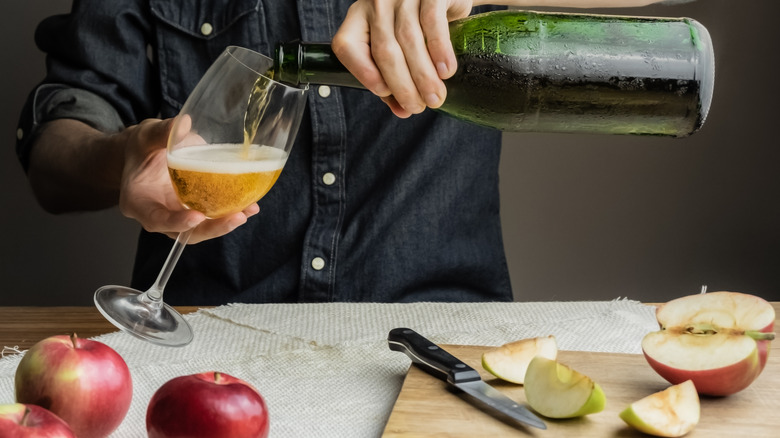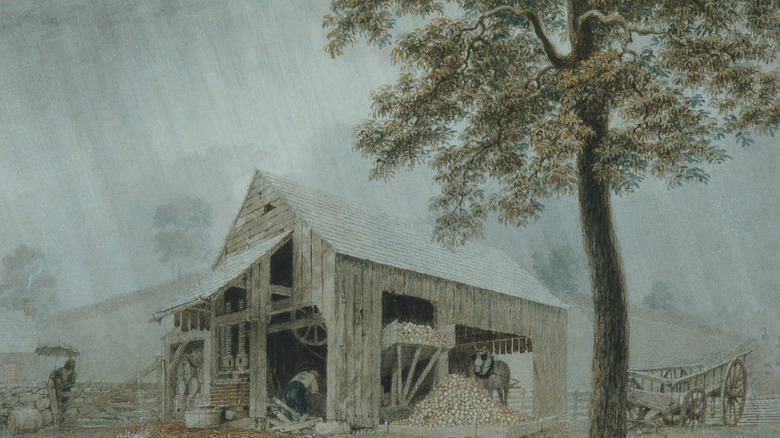The Reason Hard Cider Almost Disappeared In The US
For too long, cider in the U.S. basically meant unfiltered apple juice served hot during the holidays and enjoyed by kids. Yet during the nation's early days, a glass of the fermented, boozy version was more common than apple pie. New England families consumed up to 100 barrels of the stuff each winter, and offering cider to visitors was an expectation, per the New England Historical Society, much the same way you likely offer a glass of water today.
As detailed in the book "New World Dutch Studies," travelers to 18th century New York were amazed by the ubiquity of orchards. And essentially all of that fruit was grown to ferment — settlers couldn't imagine it any other way.
Thankfully, cider has reemerged from its long hibernation, and sales are booming: Market Data Forecast predicts the industry's market value will nearly quadruple by 2027. And while we're happy to have cider back in its boozy place of honor in the American culinary landscape, what drove it to near extinction in the first place?
Prohibition decreased cider production in the U.S.
Though there is an often-repeated story of temperance activists forcibly cutting down orchards, historian and blogger Pommel Cyder explains this doesn't appear to be rooted in fact. As the Temperance movement expanded, cider became an increasing culprit of malevolence, an enabler of liquor consumption, and greater civic harm. But while there were a few stories of farmers chopping down their own orchards to prevent alcohol consumption, cider orchards likely declined due to decreased demand. Some farmers planted other crops, while others used the apples as food for pigs and other farm animals — a practice that could potentially be more profitable than fermenting.
Meanwhile, Smithsonian Magazine explains an influx of Central European immigrants (especially Germans) brought an increased appetite for beer to the country. Combined with an easier climate for hops and grains, cider became the less dominant drink in the U.S.
Then, in 1920, came cider's final blow: prohibition. With cider consumption now outlawed, orchards dwindled further as cider-specific apple trees were replaced by farmers with sweeter, more edible varieties, according to the University of Wisconsin.
Cider production remained mostly dormant until the 1980s, when — faithful to American origins — hard cider bloomed again in New England. Sweet alcoholic apple juice began appearing in convenience stores, sold by the six-pack for an easy, approachable buzz. Not long after, a few dedicated farmers recovered old presses and immersed themselves in artisanal cider-making once more, per Boston Magazine. So break out the cider cheat sheet to buy a bottle for your next party — alcoholic cider is back in the U.S., and it's here to stay.

